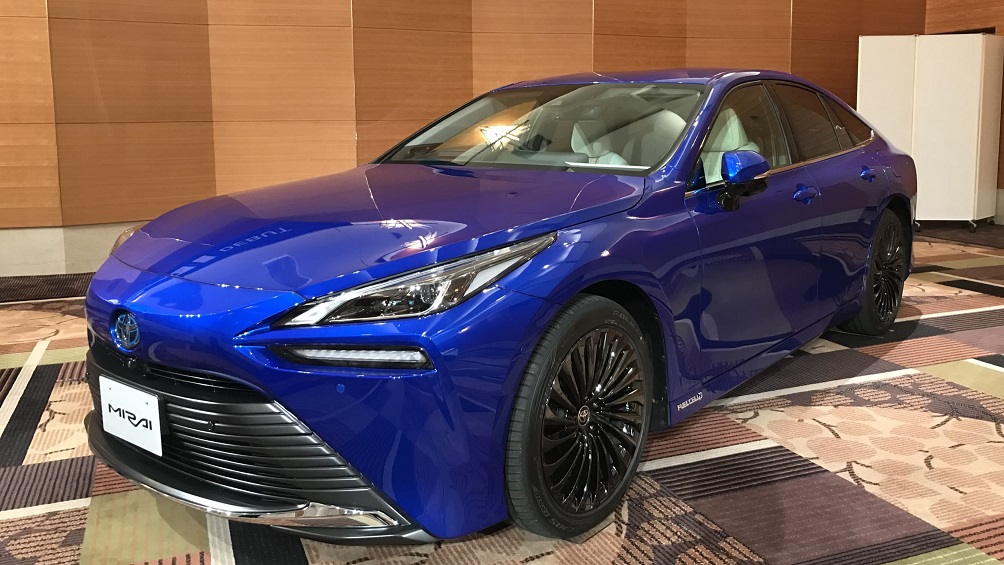Japanense automaker Toyota Motor put its modified Mirai hydrogen fuel cell car, with 30% greater range, on sale on Wednesday in a recent push to promote the zero-emission technology amid rapidly increasing demand for electric vehicles, including its own.
Toyota has failed so far to win motorists over to fuel cell vehicles (FCV), which remain a niche technology regardless of Japanese government backing, amid concerns about a lack of fuelling stations, resale values, and the threat of hydrogen explosions.
The new Mirai launch comes following Prime Minister Yoshihide Suga’s announcement of a goal in October to slash Japan’s carbon emissions to zero by 2050, in line with a European Union target and prior to a pledge by Chinese President Xi Jinping to make his country “carbon neutral” by 2060.
“The use of hydrogen is going to be an important factor in achieving carbon neutrality,” said Yoshikazu Tanaka, Mirai’s chief engineer. The car, he added represented a “departure point” for broader usage of hydrogen fuel cells beyond vehicles.
Hydrogen supporters say it is cleaner than other carbon-cutting technologies as water and heat are the only byproducts and it can be made from sources, such as methane, coal, water, even garbage. Resource-poor Japan also deems it to be a route to energy security.
By the end of September Toyota, however, had sold 11,100 of its first-generation Mirai, almost six years after its introduction. Majority of other automakers have eschewed the technology in favor of electric vehicles (EV), with only Honda Motor and Hyundai Motor in neighboring South Korea rivaling in hydrogen FCVs.
The new Mirai, like its predecessor, is still far from the budget of most drivers at about 5 million yen ($48,000) even after over $10,000 in Japanese government subsidies.
Instead of producing a cheaper car, Toyota said it wants to lure motorists with longer range – enough to drive around 800 kilometers (497 miles) without refueling – added functions such as autonomous parking and a lower, sleeker design gained by moving the hydrogen power unit to the front of the vehicle from under the car.
Accompanying the Mirai’s launch, the automaker said it planned to boost the production capacity for all FCVs, including buses and trucks, to 30,000 annually from 3,000.
That output, however, is still far behind sales of electric vehicles. In 2019, automakers sold 2.1 million electric cars alone, over 40% than the previous year, according to the International Energy Agency.
Toyota had prepared to use the postponed 2020 Olympic Games in Tokyo to exhibit its fuel cell technology, with 100 buses meant to shuttle visitors between venues. The game organizer also thought of powering the Olympic flame with hydrogen.
As of October, there were 135 hydrogen charging stations in Japan. The country wants to boost this to 900 by 2030. Companies are also calling for deregulation in the sector while the government had recently announced funding plans to accelerate green technologies, including hydrogen.



1 comment
The new fuel cell Mirai is awesome, don’t get me wrong, but isn’t anyone going to notice those amazing black rims? I’ve seen a few similar aftermarket rims from 4WheelOnline, and I’m willing to bet that they’ll add more “spice” to this ride once mounted.